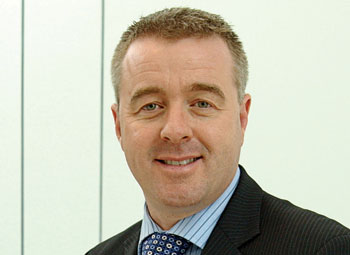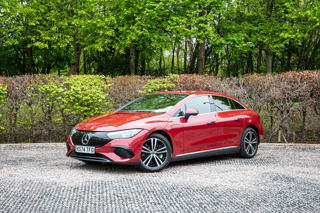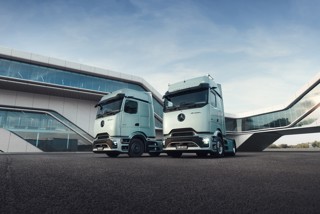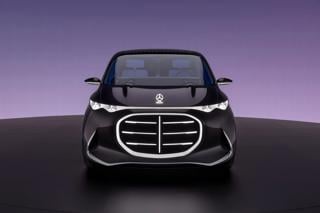Legislation remains a concern, with uncertainty casting a long shadow.
“There’s a light shining on us from Government and Europe in terms of legislation and policing.
"We have to bend with all that because we do not know whether European legislation will take us down the route of tachos at 3.5-tonnes or O-Licence at 2.6-tonnes,” says Bridge.
Downsizing as a possibility
“If that happens we will see either a shift down in van size or a shift up in weight: if you have to have an O-Licence for a 3.5-tonne van, you might as well go to a 5-tonne truck.
Others will go down the weight band to stay below the O-Licence, which will increase the traffic on the road and mean the combined emissions is higher than before.”
If fleets do look to downsize, Mercedes-Benz will be ready. Next year it launches its first car-derived van, a move which will also help the company to meet the stringent new CO2 emissions targets.
“This will give us an opportunity to sell more vehicles,” says Bridge.
“In addition, some fleets have a need to move up from a car-derived van to large panel van and they want one solution if it is available.
“From a solus badge point of view we need a car-derived van and that is why we are launching one.”
Cost message key for electric Vito
Mercedes-Benz’s affordability message is crucial when it comes to next year’s launch of the Vito E-cell. The high purchase price means it cannot be sold on the front-end capital cost.
In addition, Mercedes-Benz recognises concerns operators may have over future battery developments making current technology obsolete.
Consequently it has decided to lease the electric vans so that as and when battery technology improves, the vans can be upgraded.
“We could replace the complete van or just the battery,” Steve Bridge says. “We don’t know what the battery technology will look like in five years’ time so we want to be flexible.”
Mercedes-Benz Charterway is likely to fund the bulk of the Vito E-cell – “it’s easier” – although other lenders will be able to supply the vehicles.
The company has bided its time bringing an electric van to market. Bridge acknowledges it has been a follower not a leader.
He intends to closely monitor demand levels for Vito E-cell and will not think twice about turning down a sale if he believes the vehicle is not right for that operator.
“We will have to ask a lot of questions to ensure the vehicle is right, even if the operator wants it,” he explains.
“Lots of customers have the desire, but for the wrong reasons – PR or greenwashing.”
Early adopters will be crucial to help build up volume to critical mass when production costs will start to fall.
Those fleets will also need to be EV champions, particularly to politicians on the issue of a charging infrastructure.
“We have to have a network of charging points that allow operators to charge throughout the UK,” says Bridge.
“The issue with electric isn’t the performance or the range; it’s the uncertainty about replenishing the charge.”
He believes manufacturers, associations and operators have a joint responsibility to work with the Government and fuel companies to create the infrastructure. But he recognises there are many unanswered questions.
“How do you charge electric to the vehicle? It’s not as easy as diesel where you can measure litres.
“Do you have separate meters in the home? But what happens if the employee leaves the company – do you remove the meter?
“And how do you account for the cost? These are the type of questions that companies are asking at board level,” he says.


















Login to comment
Comments
No comments have been made yet.